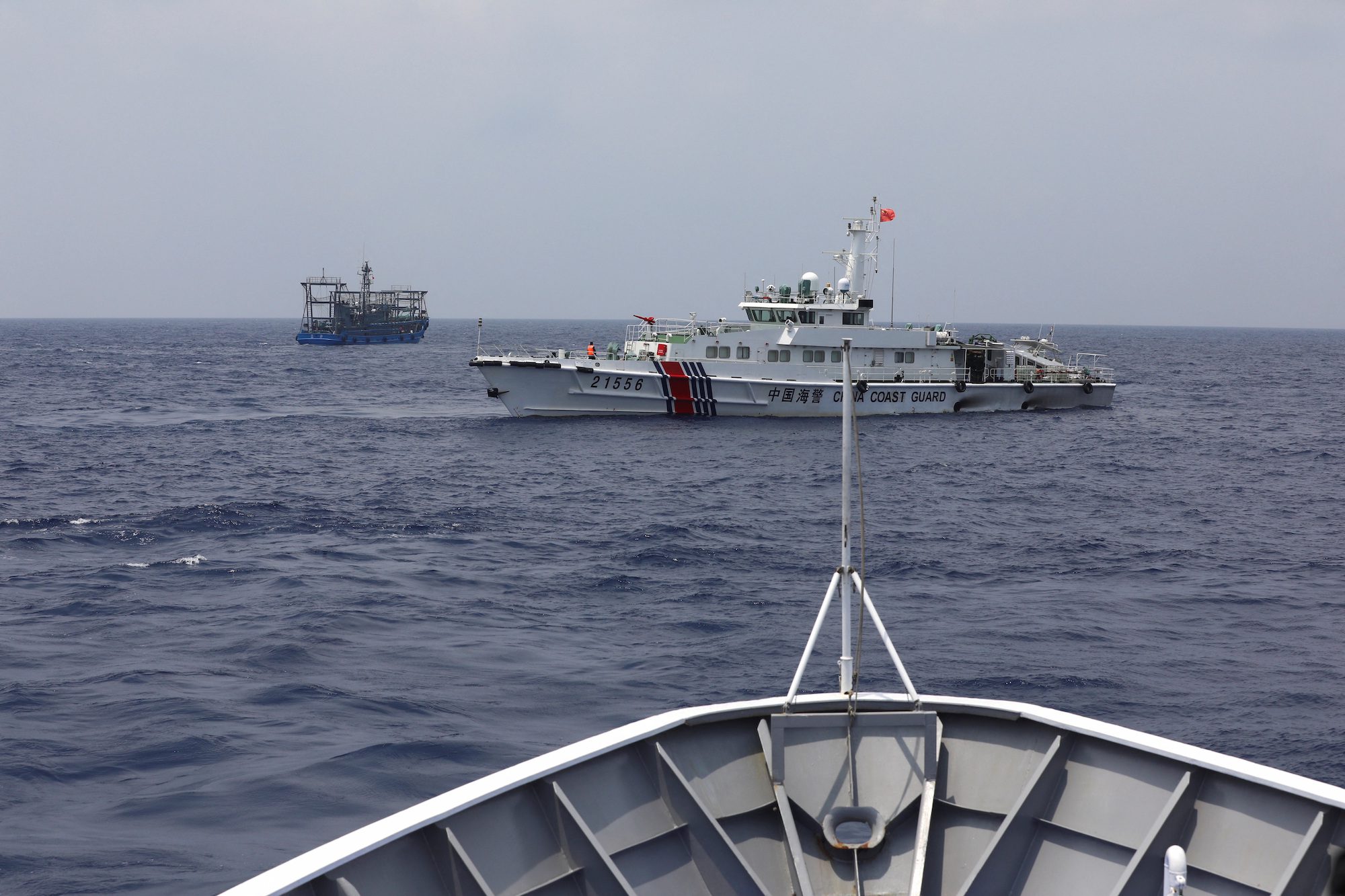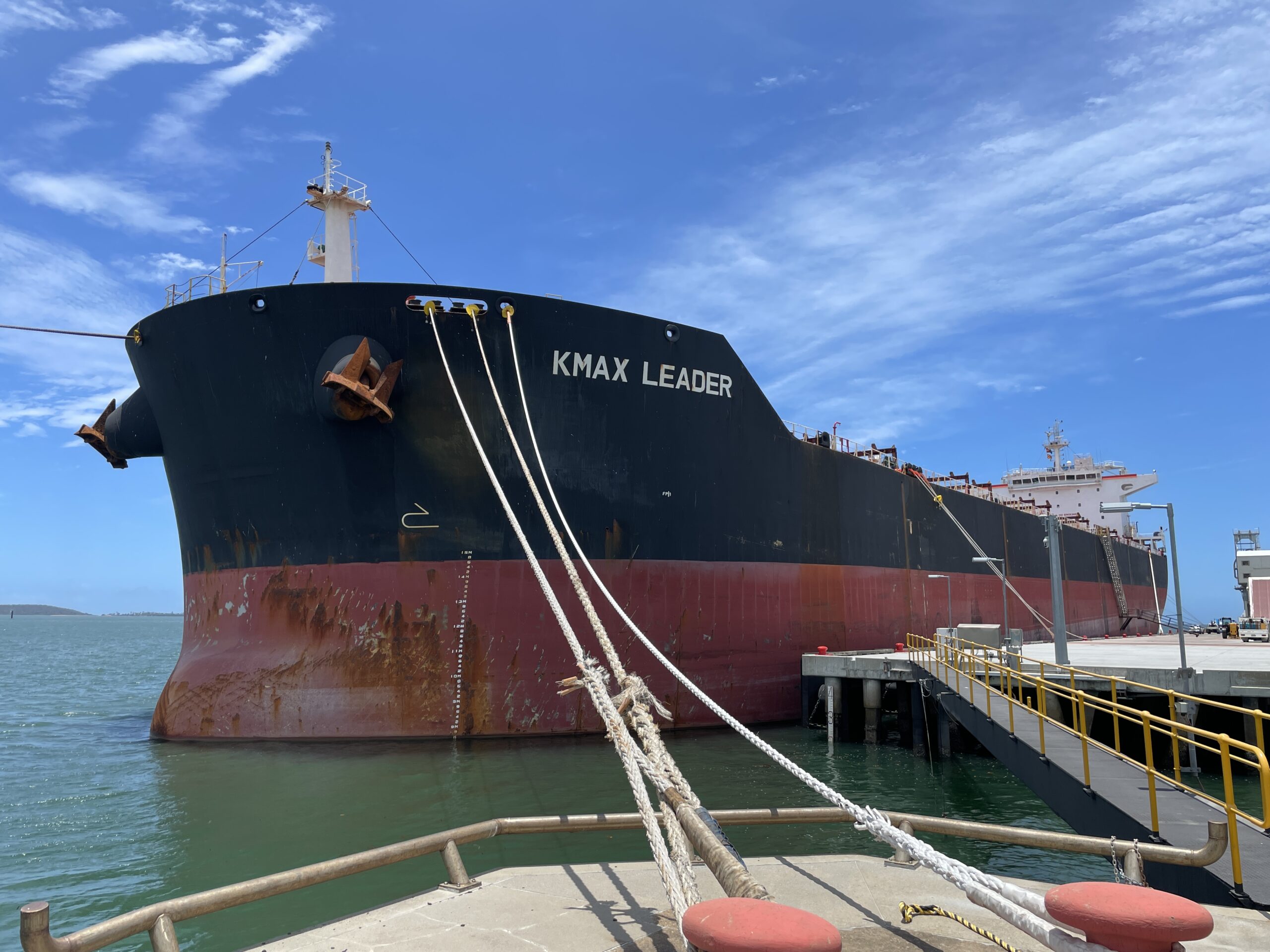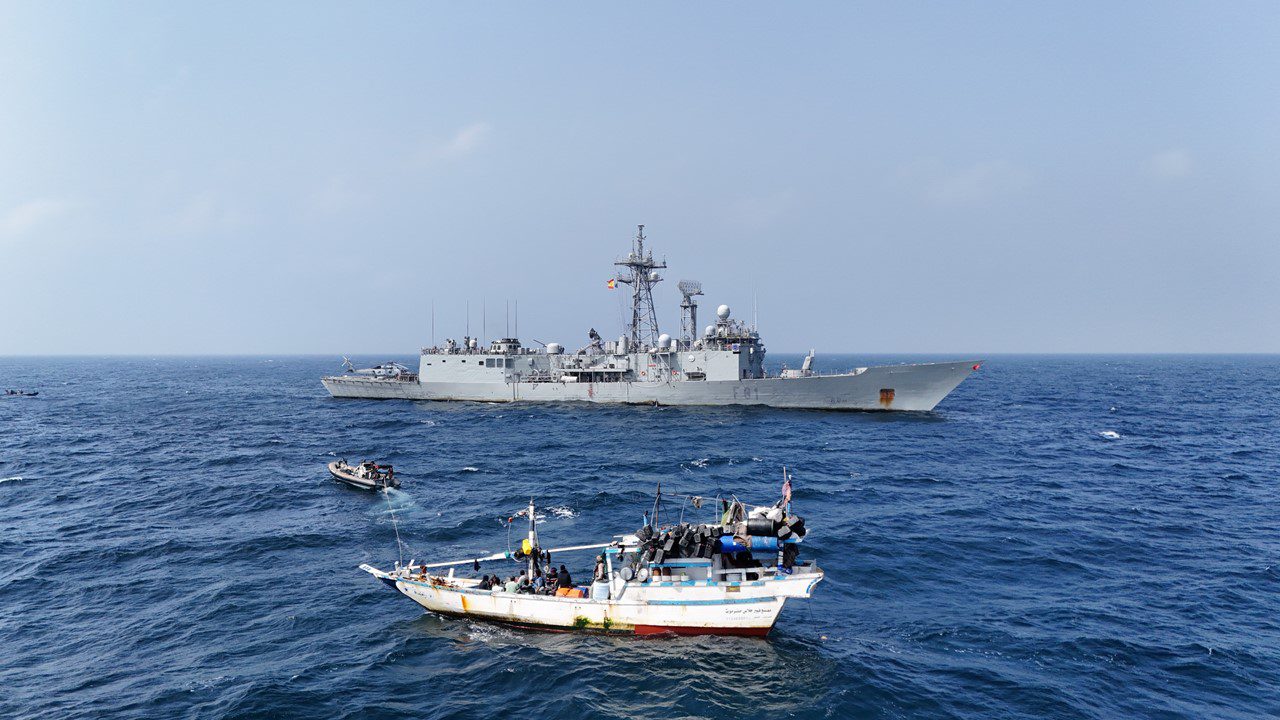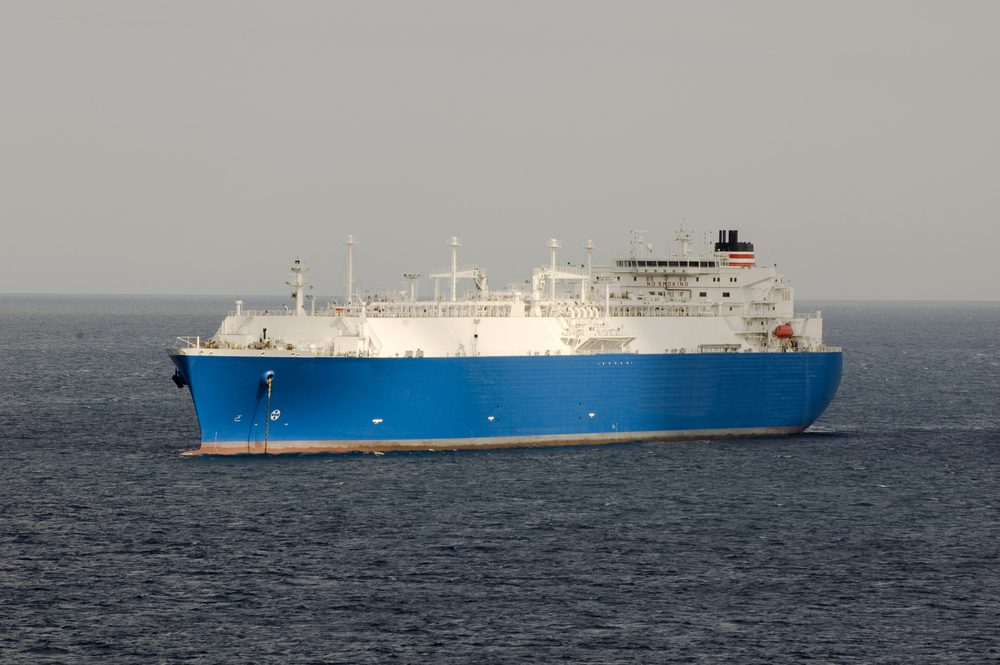By Philip Heijmans (Bloomberg) —
This was supposed to be the year that Vietnam reaped the benefits from one of its largest natural gas discoveries.
An estimated 150 billion cubic meters of the fuel, enough to power a city the size of Hanoi for decades, was discovered 50 miles (80 kilometers) from Vietnam’s central coast in 2011. If all had gone to plan, the “Blue Whale” project led by Exxon Mobil Corp. would have gone online late last year.
On the other side of the South China Sea, the Philippines has long eyed the energy riches off its western coast as a way to reduce its growing reliance on imported gas and oil, with successive governments drafting projects to tap into those resources and bolster the nation’s energy security.
None of it has happened — and an armada of Chinese fishing boats, coast guard cutters and a giant vessel dubbed the “Monster” are making sure it won’t anytime soon.
Beijing’s vast claims across the South China Sea — based on a vague 1947 map showing what’s become known as a “ten-dash line” through the waterway — were rejected by a United Nations-backed tribunal in 2016. But President Xi Jinping dismissed the ruling, and ever-growing tensions in the disputed waters all point to an uncomfortable truth for Southeast Asian nations, as well as the US: In this standoff, China is winning.
“The tactics have worked,” said Bill Hayton, author of The South China Sea: The Struggle for Power in Asia. “China has effectively established a veto over new oil developments within the U-shaped line.”
The clearest evidence of that is this: both the Philippines and Vietnam imported their first shipments of liquified natural gas last year, and they are rapidly increasing those purchases. The Philippines is slated to spend nearly $1.4 billion on LNG purchases through September 2025, while Vietnam is set to pay $370 million during the same period, according to calculations based on BloombergNEF forecasts. While the countries had long-planned to import fuel to power their growing economies, their energy supplies are at risk from delays in developing more domestic sources.
“It is possible that what China has done over the last five, six years is completely flip the energy economics of Vietnam and the Philippines towards imports rather than developing their own supplies,” Hayton added.
China’s increasingly assertive stance has sparked a flurry of diplomatic and military efforts aimed at countering Beijing’s footprint. Flagship military drills between the US and Philippines that got underway this week have grown in recent years. China tensions were also at the top of the agenda during an April 11 meeting in Washington between US President Joe Biden, Philippines President Ferdinand Marcos Jr. and Japanese Prime Minister Fumio Kishida. The three leaders agreed to step up military exercises, while Biden emphasized support for a seven-decade-old defense pact with Manila.
“Any attack on Philippine aircraft, vessels or armed forces in the South China Sea would invoke our mutual defense treaty,” Biden added.
Stretching from the Chinese mainland and Taiwan down to Malaysia and Indonesia, the South China Sea is a critical artery for global trade, including about 37% of the world’s maritime crude. Along with being a traditional fishing ground for surrounding nations, the US Energy Information Administration estimates the region contains approximately 3.6 billion barrels of oil and 40.3 trillion cubic feet of natural gas in proven and probable reserves.
Philippine officials say a mounting energy crisis is making their situation more critical than ever, and they need to get moving on developing oil and gas reserves in seas where the UN-backed tribunal said they have exclusive rights. But China’s maritime militia of fishing fleets and coast guard vessels have swarmed those areas, including the Reed Bank, effectively blocking access.
“It’s quite urgent that we start now,” Defense Secretary Gilberto Teodoro Jr. said in a recent interview. “The Chinese position is untenable.”
Yet decades of Chinese assertiveness in the region makes Beijing’s position seem more than tenable: It’s the smaller nations in Southeast Asia which are suffering. The Malampaya gas field off the western Philippine island of Palawan supplies a fifth of the power for the country’s main island, Luzon, but is forecast to become commercially depleted by 2027. Other estimates show that could happen sooner. Extreme heat shuttered more than a dozen power plants in the Philippines last week, causing brief outages in Luzon. With domestic energy supplies limited and imported energy more expensive, the risk of more brownouts will rise.
“Without Malampaya, the economy will collapse in Luzon — there will be daily brownouts from 12 to 14 hours,” said retired Philippine Supreme Court Associate Justice Antonio Carpio. “Factories will close and investors will just leave the Philippines. It’s really a matter of national survival for the country and political survival for Marcos.”
Marcos’s predecessor, Rodrigo Duterte, sought to downplay differences with Beijing and distance his nation from the US, without formally breaking the mutual defense deal. Marcos largely abandoned that approach after he took office in 2022, embracing Manila’s claims to disputed areas, sending his navy and chartered vessels out into contested zones and publicizing encounters with Chinese ships. Talks about joint exploration with Beijing broke down.
But even with US support, Manila has found that pushing back on Beijing within the Philippines’ exclusive economic zone — an area that extends 200 nautical miles from its coast — is a high-risk affair.
On March 5, two Chinese coast guard vessels directed high power water cannons directly at a Philippine ship sent to resupply the isolated crew of the Sierra Madre, a grounded and decrepit warship in the contested Second Thomas Shoal, where a small cadre of rotating military personnel defend Manila’s claim to a reef that sits within its exclusive economic zone. The Philippine craft reeled under the barrage, pushed backwards and sideways as the Chinese ships circled it. With the water cannons blasting out windows on the ship, the clash left several Filipino crew members injured. A similar incident took place March 23.
In an encounter late last year, a Philippines convoy was on a resupply mission to the Sierra Madre when five Chinese craft maneuvered to impede it, some pulling up right along side.
“Stop your illegal operation immediately,” blared a radio warning the Chinese ships. “If you continue to disregard our warning, we will take necessary measures and you will take full responsibility for the consequences.”
As crew members held buoys over the side in case of a collision, a Philippine mariner responded back that her vessel was “conducting a routine maritime patrol within the Philippine exclusive economic zone. We are proceeding to our planned route. Leave immediately. Stay clear from our passage.”
In the end, the resupply ship managed to get to the Sierra Madre, but this type of higher-risk encounter is becoming more common.
With that backdrop, Defense Secretary Teodoro in March directed the Philippine military to enforce a new strategy to defend the nation’s territory and economic interests, including natural resources in the South China Sea. Details of the strategy haven’t been made public. Ambassador to the US Jose Manuel Romualdez told Bloomberg the country will count on Washington and its partners to play a crucial role.
Pressed about the Philippines’ new approach, Chinese Foreign Ministry spokesman Wang Wenbin warned that “the exploration of resources in the South China Sea should not harm China’s territorial sovereignty.” In a clear reference to the US, Wang added that “no one shall draw forces outside the region into the issues.”
The stalemate has left Manila on an even worse footing than Vietnam, which has also suffered energy shortages while seeing projects like Blue Whale delayed indefinitely or, in other cases, effectively abandoned.
A leaked US diplomatic cable said Chevron Corp. suspended activity off of Vietnam in 2007 after warnings by Beijing. The “first major investment casualty” of the dispute came the next year after BP Plc. terminated a planned $2 billion integrated gas field and pipeline project, according to the document. Spain’s Repsol SA had to suspend plans to develop an offshore oil project known as Red Emperor in 2018 — after nearly a decade of work — when Chinese threats forced Hanoi to back down, prompting Vietnam to pay investors a reported $1 billion in compensation.
As for Blue Whale’s failure, red tape and shifting market demands also played an important part. But China’s claims always loomed over the effort, leaving a potential $50 billion in revenue locked below the seabed.
One tool China has frequently used to enforce its claims near Vietnam is the CCG 5901, a coast guard vessel based out of Hainan Island that is better known as the “Monster.”
Bigger than a US Navy destroyer, the Monster is a 12,000-ton patrol vessel armed with anti-aircraft guns and fuel storage capacities enabling it to undertake extended missions. It regularly sails in and around the energy-rich waters Vietnam has spent years trying to develop. The Monster is just one of the vessels China uses to enforce its claims, and the kind of ship smaller Southeast Asian nations can’t compete with.
According to an analysis by the Asia Maritime Transparency Initiative, Chinese coast guard ships spent at least 1,652 ship-days patrolling the five most contested shoals, islands and banks in the South China Sea last year, a statistic it said was an underestimate because of the lack of commercial satellite data available.
Those ships can take on extended missions because of about 20 outposts — some with runways and fuel depots — in the contested Paracel and Spratly Islands that China established following unprecedented dredging and artificial island-building over more than a decade. Other nations, including the Philippines and Vietnam, have sought to do the same in some locations, but Beijing has a big head start.
“The island building has been decisive,” said Greg Poling, head of the Southeast Asia program at Washington’s Center for Strategic and International Studies. “Without it China wouldn’t have the sensing capabilities to see all this Southeast Asian activity and respond almost immediately.”
China’s stance isn’t the only problem. Offshore developments in Southeast Asia can be more technically challenging and expensive than assets elsewhere, making the region less attractive for the oil majors. Meanwhile, lengthy delays for local government approvals and contracts have upended projects.
There are some exceptions to China’s ability to shut down energy developments in the region. Malaysia’s Petroliam Nasional Bhd. remains determined to get its Kasawari gas field off the coast of Borneo online after repeated harassment from Chinese vessels, according to a person familiar with the matter who asked not to be identified because the issue is private. In 2022, the companies involved were the target of a cyber espionage campaign, allegedly by a hacking group based in China. Despite the tense history, Petronas is moving forward cautiously in order to not trigger further conflict, according to the person.
Previous Philippine governments have tried to broker an accord with China. Manila, Hanoi and Beijing had a deal to jointly undertake seismic studies of the region in 2005, but it foundered when then-President Gloria Arroyo faced corruption allegations and the threat of impeachment. Beijing also blamed the Obama administration’s pivot to Asia for poisoning that relationship, and a Philippine Supreme Court ruling in 2023 called the agreement unconstitutional.
Manila and Beijing separately had been in talks about a joint venture agreement that would extend through 2015, but that effort also collapsed when the Philippines officially contested China’s vast regional claims with a case to the Permanent Court of Arbitration. When the tribunal ruled in Manila’s favor, a deal with Beijing became politically toxic.
Despite repeated setbacks, Hanoi still wants Blue Whale — in which Exxon has a 64% stake — to go forward, according to recent government documents seen by Bloomberg. Yet the project’s development plans still haven’t been approved and a new launch date “can’t be determined,” according to a trade ministry memo dated Dec. 29.
Exxon declined an interview request to discuss the project and issued a statement saying “business activities are continuing as usual.”
Without a breakthrough, the South China Sea’s resources look set to stay buried. After rushed efforts to diversify supply chains out of China and the hurdles created by Russia’s war in Ukraine and the widening Mideast conflict, most companies are loathe to step into yet another geopolitical minefield.
“It’s hard to go into a boardroom and argue, ‘Hey, we should develop this modest field in the South China Sea instead of 12 other identical fields somewhere else around the world where we wouldn’t have Chinese harassment,’” said Poling of CSIS.
Philippines President Marcos acknowledged the precarious position he finds himself in during a March 19 interview, saying his government wants “to keep things on an even keel” with China. But he also added that “since the threat has grown, we must do more to defend our territory.”
For now, how the broader South China Sea disputes play out looks increasingly fraught. Diplomatic efforts led by a divided Association of Southeast Asian Nations have dragged on for decades. With active wars in the Middle East and Ukraine, and tensions still high over Taiwan, there’s only so far Washington will be willing to go.
“The United States might help assist the Philippines in constructing a more capable coast guard force,” said Ketian Zhang, an assistant professor of international security at George Mason University and author of China’s Gambit: The Calculus of Coercion. “But short of an armed attack on Philippine assets in the South China Sea, it is unlikely that the United States would get involved militarily.”
© 2024 Bloomberg L.P.
Unlock Exclusive Insights Today!
Join the gCaptain Club for curated content, insider opinions, and vibrant community discussions.

 Join The Club
Join The Club











